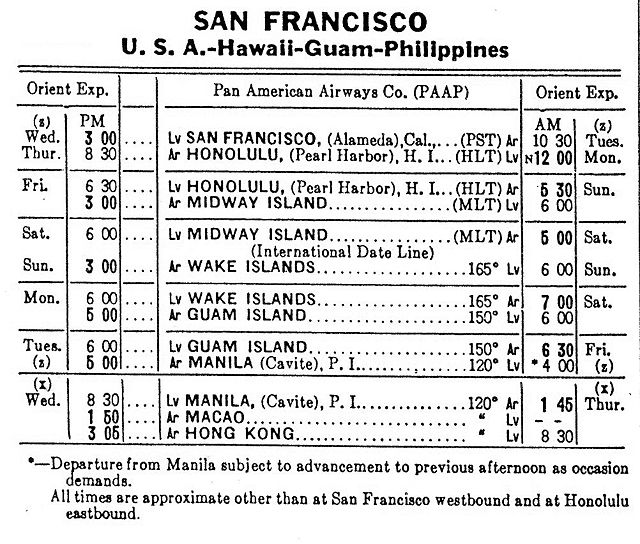New York, Rio, and Buenos Aires Line
New York, Rio, and Buenos Aires Line was an airline that operated seaplane service from New York City to Rio de Janeiro, Buenos Aires, and intermediate points on the east coast of South America during the 1920s. It was forced to merge into its competitor, Pan American World Airways, in 1930.
New York, Rio, and Buenos Aires Line
Two flown covers carried on NYRBA’s inaugural flight from Rio de Janeiro (upper) and Buenos Aires (lower) to Miami, February 19-25,1930
Pan American World Airways, originally founded as Pan American Airways and more commonly known as Pan Am, was an airline that was the principal and largest international air carrier and unofficial overseas flag carrier of the United States for much of the 20th century. It was the first airline to fly worldwide and pioneered numerous innovations of the modern airline industry, such as jumbo jets and computerized reservation systems. Until its dissolution on December 4, 1991, Pan Am "epitomized the luxury and glamour of intercontinental travel", and it remains a cultural icon of the 20th century, identified by its blue globe logo, the use of the word "Clipper" in its aircraft names and call signs, and the white uniform caps of its pilots.
Flown cover autographed by pilot Cy Caldwell and carried from Key West, Florida, to Havana, Cuba, on the first contract airmail flight operated by Pan American Airways, October 19, 1927
"Birthplace of Pan American World Airways", Key West, Florida
1941 advertising mailer for Pan Am's "Flying Clipper Cruises" to South America
PAA's China Clipper service cut the time of a transpacific crossing from as much as six weeks by sea to just six days by air.






